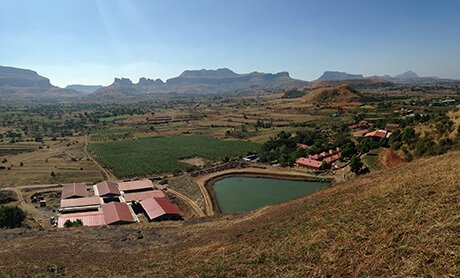Today everyone knows what yoga is but their understanding is mostly limited to physical postures, known as Asanas. But does yoga means physical poses? To find the answer we need to understand the definitions of yoga in the ancient texts. These ancient texts are giving a powerful message of yoga which is much deeper than what we understand.
Yoga is a word from Sanskrit language which means join, 2 or more things are needed to join. And when 2 or more objects are joined, then it becomes one object. There is connection and harmony between 2 objects which have become one. So yoga is all about oneness, experience of oneness, feeling of harmony.
“Yogah Chitta Vritti Nirodhah” - Chitt – mind, Vritti – functioning of mind, Nirodha –control Yoga is to control the functioning of the mind. We have our thoughts, emotions, feelings and conditionings in the mind. It is very difficult to control. Yoga is the technique to control all these functions of the mind.
Lord Krishna defines yoga as “Samatvam Yoga Uchyate” – Samatva – balanced state, Uchyate – said to be
Yoga is a balanced state. Yoga is a balanced state of the body and mind. Yoga is a balanced state of emotions. Yoga is a balanced state of thoughts and intellect. Yoga is a balanced state of behaviour. We are excited in the situation of pleasure and we become sad when it is a negative situation. Yoga is to maintain equilibrium of the mind in any situation. This equanimity of mind is the ultimate objective of yoga.
Lord Krishna gives another definition of yoga. “Yogah karmasu kaushalam” – karma – action / behavior / any change in time and space, kaushalam – skill / efficiency / perfect or appropriate behavior
Yoga is perfectly skilled action or behavior. Perfect action is positive action for our evolution and positive life. Perfect action leads to positive health on a physical and mental level. All our actions should be to avoid negative experiences in life, so any behaviour causing negative experience should be avoided. For example, getting angry is harmful for our body and mind, and therefore should be controlled. If stress and anxiety are bad for health then our action should be such that stress and anxiety does not disturb that positive state of mind.
– In Yoga Vashishtha, Guru of Lord Rama Sage Vashishtha defines yoga as “Yoga mana prashmana upayah” – mana – mind, prashmana – perfectly peaceful and silent, upay – remedy, cure
Yoga is a cure for the mind to become perfectly steady and peaceful. Our natural state of mind is peaceful and without any distractions, disturbances, difficulties and distress. Yoga is the path to reach this natural state.
Yoga’s approach is simple. If the mind is not controlled then the body will also not be under control. If the mind is not healthy then body will not be healthy. Research has shown that every thought in the mind affects the brain, nervous system and all other organs in the body. Negative thoughts and emotions disturb the balance of the nervous system and all other organs. This is the cause of all diseases of the body and mind, so control of the mind is essential for physical and mental health.
A balanced lifestyle is essential for the harmony of mind and body. This lifestyle is connected with nature and therefore making our life more nature friendly is the positive way to health. Yoga is to harmonize the body and mind with nature and lifestyle in tune with nature.
by Gandhar Mandlik
| COURSE | Venue |
Phone - +91-9822770727
E-mail - yoga@yogapoint.com or yogapoint108@gmail.com

Yoga Vidya Dham, Kaivalya Nagari,
College Road, Nashik - 422005.
Maharashtra, India.
Phone - +91-9822770727 (for courses in ENGLISH)
+91-253-2318090 (For courses, in HINDI or MARATHI)
(Please call during 9.00 AM to 5 PM Indian Time)
E-mail - yoga@yogapoint.co or yogapoint108@gmail.com
Village Talwade, Trimbak, Nasik
Maharashtra,India.
Phone - +91-9822770727
E-mail - yoga@yogapoint.com or yogapoint108@gmail.com
